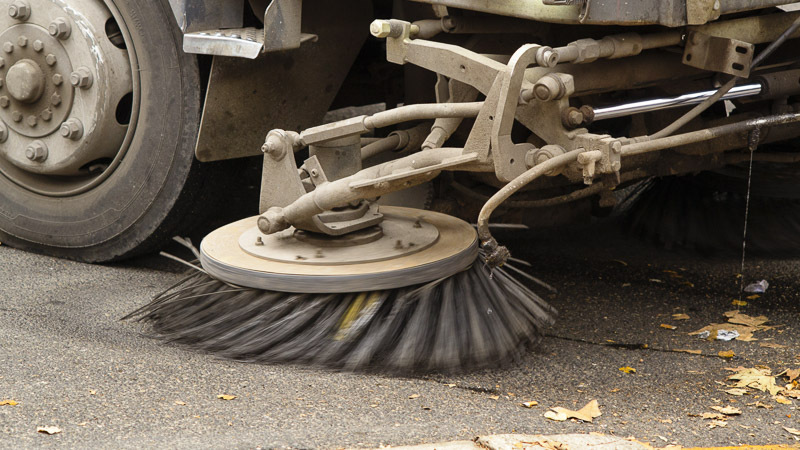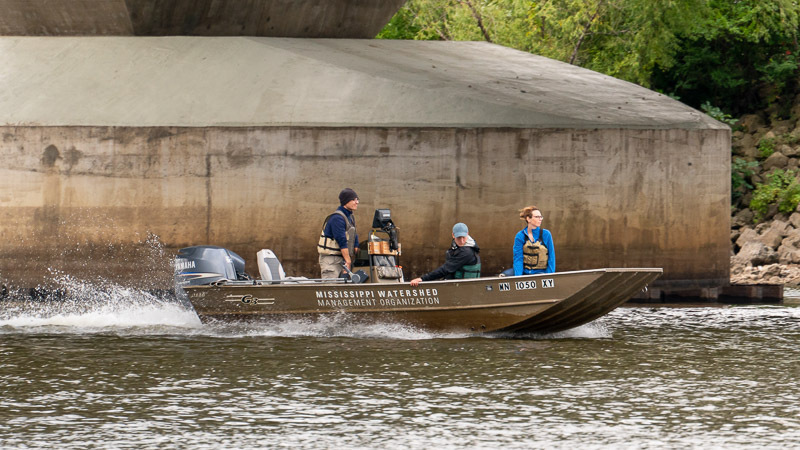|
NEWSLETTER / OCTOBER 2023
Street Sweeping: Why Cities Do It, and How You Can Help
 It’s street sweeping season in much of the Twin Cities metro area. (Maybe you already noticed; hopefully, you didn’t get a parking ticket.😉)
Street sweeping helps protect water quality in our rivers, lakes and streams. It keeps sediment, trash, road salt, and fallen leaves out of the stormsewers. It also helps prevent stormdrains from becoming clogged, which could lead to flooding.
Most cities conduct street sweeping one to three times per year. Minneapolis does it twice — once in the spring to clean up leftover sand and salt from winter road maintenance, and once in the fall to clean up fallen leaves.
Here’s how you can help the street sweepers:
-
Don’t rake your leaves into the street. It makes street sweepers’ job more difficult and contributes to clogged stormdrains. Instead, check our fall yard care guide for tips on managing leaves.
-
Adopt a stormdrain. Street sweeping crews can’t do everything themselves. Visit adopt-a-drain.org to join the more than 12,000 residents who volunteer to protect water in their communities by keeping stormdrains clear of leaves, trash and debris.
Low Water Levels Reveal Minneapolis Riverfront’s Hidden Past
 The historically low water levels in the Mississippi River this summer afforded a unique glimpse into the past — right here from our shoreline at the MWMO.
A series of seemingly mysterious “islands” appeared just south of the Lowry Avenue Bridge, forming a neat line along the eastern half of the river. To understand their significance, one needs to know a bit of history:
In the late 1800s, Minneapolis was a crucial hub in the nation’s timber industry. Lumberjacks in Northern Minnesota would cut down trees in the winter and then drive the logs downriver to the sawmills each spring. At one time, more than a dozen sawmills operated in Minneapolis — powered by the only major waterfall on the Mississippi River, St. Anthony Falls.
With so many sawmills operating in one place, each log needed to be stamped and sorted to reach the correct mill. To accomplish this, lumberjacks used a series of “log booms” — floating barriers designed to contain logs so they could be routed to their ultimate destinations.
The “islands” are actually remnants of log boom foundations. The Minneapolis riverfront north of St. Anthony Falls was once a veritable latticework of log booms, as shown in this 1895 map from the Mississippi River Commission.
Special thanks to John Anfinson, former superintendent of the Mississippi National River and Recreation Area, who aided in the research for this article. (He also shared with us the map linked above.)
Bonus: Learn more about the river’s pre- and post-settlement history via the National Park Service.
MWMO Welcomes Emily Resseger
 Our water quality monitoring team has a new leader.
The MWMO recently welcomed Emily Resseger as our new Monitoring, Assessment, and Research Program Manager. In this role, her job will be to oversee the MWMO’s monitoring and research programs.
Resseger is a professional engineer with a background in local and regional planning and water resources. Most recently, she worked for the Metropolitan Council. You can learn about her background and her goals for her new job on our website.
Read More >
Water Resources and Instrumentation Specialist
 This position is responsible for installing, operating, and maintaining manual and automatic water monitoring equipment and instruments throughout the watershed and performing water quality monitoring field work and data storage.
Come join our monitoring team and help make a difference to the Mississippi River!
Closes: Dec. 1, 2023
Learn More >
Seeing Salt | New Artwork by Annie Irene Hejny
 View artist Annie Irene Hejny's Minnesota Water Steward capstone project, featuring new artwork that addresses salt pollution in the winter.
- Friday, Nov. 10, 5 p.m.–10 p.m.
- Saturday, Nov. 11, 12 p.m.–5 p.m.
Bonus: "Prep for Winter with a Minnesota Water Steward" — A panel discussion with Q&A about best practices to reduce salt usage.
- Saturday, Nov. 11 at 2 p.m.
Location: Casket Arts Building, Studio #213, 681 17th Avenue NE, Minneapolis, MN 55413
Learn More >
Smart Salting for Property Managers
 This training offers property managers and owners tools to save money and time, and reduce salt pollution while still being safe.
Additional training opportunities may be available through other organizations. Check the MPCA’s training calendar.
Stewardship Fund Grants Information Sessions
 Do you have an idea for a project to improve water quality and habitat in your community? Learn how to apply for a grant from the MWMO’s Stewardship Fund!
Join us for a free information session, where you can find out more about the grant program, network with others and ask questions.
Upcoming Grant Application Deadlines
Photo of the Month
 A bright orange semi-trailer drives over the Lowry Avenue Bridge, framed by fall foliage and the Downtown Minneapolis skyline, as the entire scene is reflected on the surface of the Mississippi River on Oct. 25, 2023.
Bonus: Check out more fall foliage photos.
|